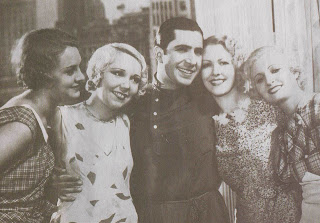Rosario - La ciudad de la bandera
 Some month ago we spent a weekend visiting Rosario, one of the main citys of Argentina after Ciudad de Buenos Aires and Córdoba Capital, since it is located in a strategic place regarding the MERCOSUR (Southern Common Market) and this fact places it in an important industrial and tourist level.
Some month ago we spent a weekend visiting Rosario, one of the main citys of Argentina after Ciudad de Buenos Aires and Córdoba Capital, since it is located in a strategic place regarding the MERCOSUR (Southern Common Market) and this fact places it in an important industrial and tourist level.
We took a bus at Retiro Bus Station, there are buses every hour going to Rosario. In almost 3 hours we were in the city. It is a good "escapada de fin de semana", as we the porteños say. The city has a slower pace, it resembles to Buenos Aires, in the eclectisism of its architecture, but I think Rosario may be it looks like Buenos Aires 20 years ago, with fewer grand towers. Rosario . It invites to be visited through the many historical circuits that still preserves buildings from the begining and mid 20th century. It is beautiful to walk from Santa Fé Street and Oroño Boulevard, throught the Oroño Boulevard till you get to the riverside.  The walk throught the cost of the Paraná river is lovely to do it in a sunny day, and just seat for a while sorrounded by santafecinos families that gather there to drink mate or have a pic nic. Finish the walk in the impressive "Monumento a la Bandera", built to conmemorate that on 27 February 1812, General Manuel Belgrano raised the newly created Argentine flag on the shores of the Paraná, for the first time. This monument is the starting point to a walk around the city center. In the city center we suggest to make a stop in one of the many coffe shops, and ask for a "carlitos" (a sandwich made of cheese, jam and ketchup). To dinne go to Rich Restaurant (San Juan street 1031), another classic place for rosarinos, it is a meeting point for families on sunday and friday nights. The restaurant was opened in 1932, and offer tipical argentine meals: ask for the suprema meryland, costillitas de cerdo a la riojana, or suprema a la suiza.
The walk throught the cost of the Paraná river is lovely to do it in a sunny day, and just seat for a while sorrounded by santafecinos families that gather there to drink mate or have a pic nic. Finish the walk in the impressive "Monumento a la Bandera", built to conmemorate that on 27 February 1812, General Manuel Belgrano raised the newly created Argentine flag on the shores of the Paraná, for the first time. This monument is the starting point to a walk around the city center. In the city center we suggest to make a stop in one of the many coffe shops, and ask for a "carlitos" (a sandwich made of cheese, jam and ketchup). To dinne go to Rich Restaurant (San Juan street 1031), another classic place for rosarinos, it is a meeting point for families on sunday and friday nights. The restaurant was opened in 1932, and offer tipical argentine meals: ask for the suprema meryland, costillitas de cerdo a la riojana, or suprema a la suiza.
The city has several museums, among which are to be noted: the Juan B. Castagnino Fine Arts Museum, the Firma y Odilo Estévez Municipal Decorative Art Museum, the Dr. Julio Marc Provincial Historical Museum, the Museum of the City, and the Museum of Contemporary Art of Rosario (MACRo). The Dr. Ángel Gallardo Provincial Natural Sciences Museum was reconstructed after a fire in 2003 and re-opened in a new location in 2006, and there are projects to move the National Oriental Art Museum, which currently shares a building with the National Decorative Art Museum in Buenos Aires, to Rosario.






















